Crowdfunding platform aims to help designers avoid "awful" royalties
News: the #milanuncut debate that exposed the poor royalties designers earn has inspired the launch of Crowdyhouse, a new crowdfunding platform that helps designers find funding for their products.
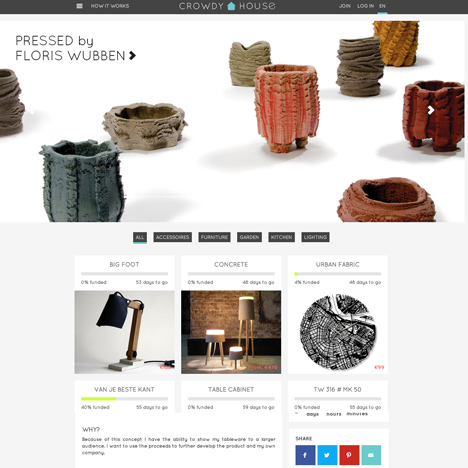
CrowdyHouse, which will launch this week at Dutch Design Week, has been developed by Mark Studholme and Suzan Claesen to provide an alternative to the traditional royalties system, which Studholme says provides "an awful deal for the designers".
"Our platform means that designers don't have to take their product to Milan, stand next to it for a week, convince someone to buy it and then only receive 5 percent in royalties of the wholesale price," Studholme told Dezeen.
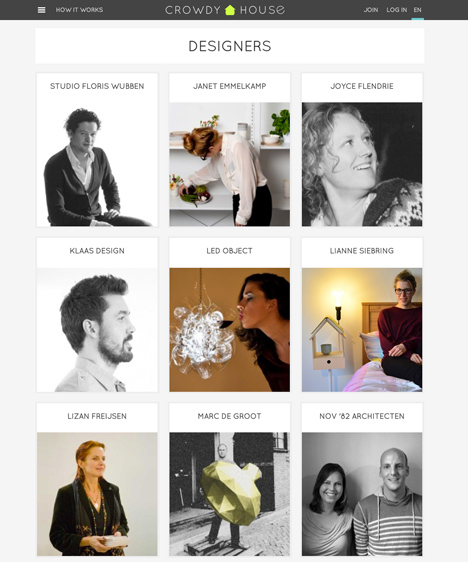
Studholme says the #milanuncut project, which engaged dozens journalists and designers during Milan 2011, focused his attention on the difficulties faced by young designers trying to sell their work.
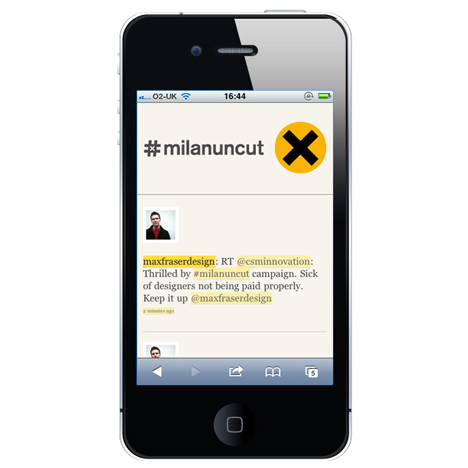
Coordinated by Dezeen and facilitated by an identity and a mobile app developed by London graphic designers Zerofee, #milanuncut was an open-source discussion on Twitter about the way designers are paid for their work in the furniture and product design industry. It drew attention to the paltry royalties and unfavourable contractual terms that are typical when young designers develop products for well-known brands.
"I'm very surprised that, since #milanuncut two years ago, no solutions have really been proposed," he points out. "The conversation just died down, so hopefully we can ignite it again."
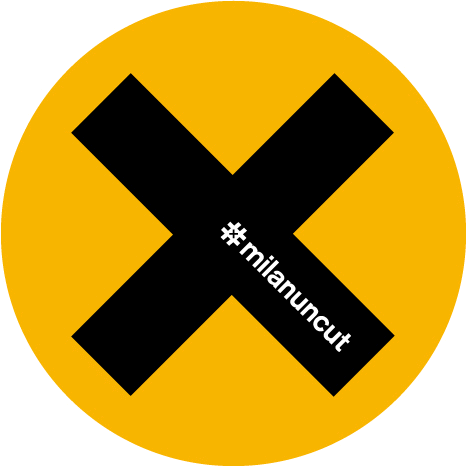
During the Milan Furniture Fair in 2011, journalists including Kieran Long, Max Fraser, Justin McGuirk, Julie Taraska and Dezeen's Marcus Fairs contributed to the #milanuncut debate, which set the international agenda for the fair. McGuirk focused on the issue in his Milan review in UK newspaper The Guardian and publications including Abitare, Form magazine and Architects Journal reported on the topic.
"The #milanuncut story was really just a symptom of the unsustainable state of the furniture industry," said McGuirk this week. "As design manufacturing is forced to reinvent itself, crowdfunding platforms are an obvious step in a new direction, potentially giving designers direct access to markets of their own making."
Kieran Long added: "There was nothing very systematic about #milanuncut, and for me it was a way of publicising what everyone in the design industry knows: that furniture and product design is not a real business for most of the people involved with it."
Long added: "The royalty system is not fair or equitable for designers, and most designers are used as a way of generating free PR for the brands. Going direct to manufacturing is certainly one way to tackle this - in the meantime, the mainstream system of furniture manufacturing will undoubtedly change in the coming years as the economic realities hit home."
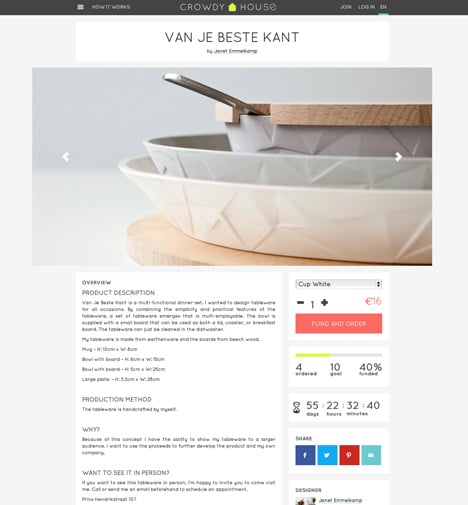
Using a similar crowdfunding principle to the one popularised by companies such as Kickstarter, designers are able to raise money upfront by inviting funding for products which investors eventually receive once they have been produced. The designers retain 90 percent of the funding total, with CrowdyHouse taking the other 10 percent.
"Crowdyhouse is actually the first crowd-funded platform specifically for design," says Studholme. "We realised the traditional Kickstarter model doesn't favour designers so we thought there was a need for a design-specific platform that really allows the designers to focus on the designs."
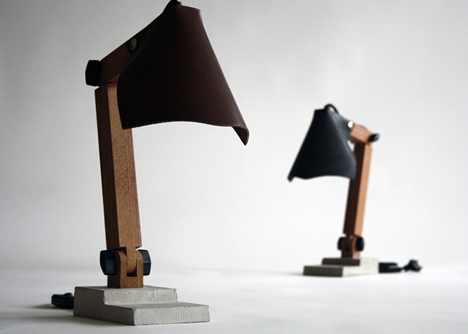
CrowdyHouse offers contemporary products and furniture ranging in price from €65-3000. Designs have to reach a minimum order number before the designer begins to manufacture the product and distribute it to investors.
Details about the designers and the story behind the products, how the funds will be used, and the progress of funding and product development are listed on the website.
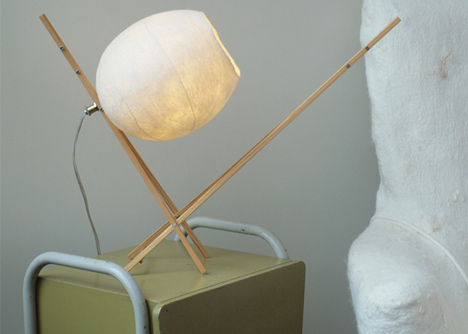
Some of the products featured include pressed-clay vessels by Studio Floris Wubben and a concrete, wood and leather lamp by Tim Vinke. Design studio Vilt aan Zee plans to use the funds generated on CrowdyHouse to buy a sheep to supply wool for its felt-shaded table lamp.
The designers listed on the site are currently all based in CrowdyHouse's home nation of The Netherlands but Studholme and Claesen plan to expand the roster to include designers from other countries.
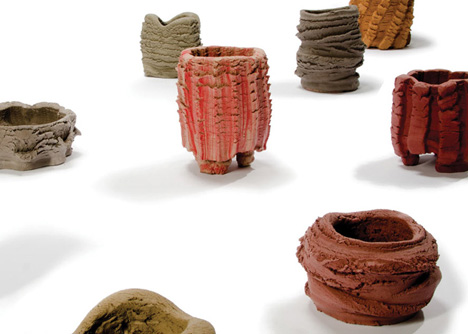
Here's a full press release about the launch of CrowdyHouse:
CrowdyHouse stimulates unique design
Launch of innovative crowdfunding and sales platform on October 21st
A new Dutch concept to stimulate innovative design: CrowdyHouse. This platform is a unique combination of crowdfunding and retail. Giving designers the possibility to self-produce their work and allowing consumers to buy unique design in a transparent manner. CrowdyHouse is launching during the Dutch Design Week, October 21st, in Eindhoven.
When you have a good design as a designer, it's surprisingly difficult to get financing for the production of it. What CrowdyHouse does is loosely based on the popular crowdfunding principle, but adds a dimension. Investors are also aspiring buyers. Their funding enables the designer to start producing. In return for funding the product upfront they will get the design they helped put into production.
On CrowdyHouse.com, the renowned designer Marc de Groot offers his Helix Light, a strongly geometrical shaped ceiling lamp, which splits a line of light into the shape of a three-dimensional Helix. Rebob offers a sympathetic porcelain birdhouse, shaped like a bird's head. Renate Vos designed a table lamp of concrete, which sounds heavy but appears fragile and subtly spreads light.
'The idea for CrowdyHouse began at the Salone del Mobile in Milan, says Mark Studholme who, together with Suzan Claesen, founded the platform. 'We were surprised about how little a designer earns if his design is taken into production by a large manufacturer. It can be just 5 percent of the wholesale price that goes to the designer.'
Democratic design for an honest price, is one of the principles of CrowdyHouse. Democratic because the consumer decides which design gets produced by funding it. And honest because the money that is earned fully benefits the designer. CrowdyHouse's role is limited to being a mediator. The initiative for the new design platform arrives at a time where the creative industry boils of good ideas, but all sources of financing have been depleted. The government is handing out increasingly less innovation grants. Banks don't spend any money on young entrepreneurs. 'CrowdyHouse can be a crowbar, a party that fills the void between a good idea and the lover of design', according to Studholme.
The dozens of products being offered on CrowdyHouse.com are mostly meant for home interior use and vary in price from 65 to 3000 euro. Those who like the product and its story deposits their funding upfront. The site can then be used to track the popularity of a product, how long it will take before production starts and what the money will be used for.
The designers at Vilt aan Zee want to use the investment to purchase a sheep which they can use to produce wool for a lamp. Carpet designer Lizan Freijsen needs a small storage space before she can close a good deal with a textiles lab which produces carpets made from lichen. Each designer needs a small push. Design consumers can provide this small push on CrowdyHouse.
Stimulating unique design through crowdfunding, is the core of what this new platform does. 'We offer products with a story from the designer', says Studholme. 'This gives funding and ordering at CrowdyHouse a very special dimension.'